Key Takeaways
The transportation and logistics sector is at the core of economies around the world. It acts as a medium that facilitates the movement of people, goods, and products from one location to another. Up to 95%* of manufactured goods are transported in containers at one point in the supply chain, and with the global consumer class expected to grow by 35%** by 2030, demands on the transportation sector are expected to increase. This is driving a focus on how the industry can tackle its biggest challenges, which center around visibility, agility, and sustainability.
Internet of Things (IoT) technologies enable companies in transport and logistics to mitigate these challenges. Through built-in sensors and onboard diagnostics systems, conventional trucks are transformed into data-transmitting vehicles, allowing managers to track their vehicles, respond to changing environments and identify inefficient activity in real-time.
It is no surprise that the adoption of IoT in transportation has taken off over the past few years with further acceleration driven by the COVID-19 pandemic. According to a survey by Inmarsat, a global leader in mobile communication, nearly all the transportation and logistics respondents said they have in place, plan to implement in the next 12 months, or are currently trialing at least one IoT project.
What is IoT in Transportation & Logistics
IoT in the transport and logistics industry is often called telematics, which is the foundational technology behind fleet tracking and fleet management software. Data capture devices installed on vehicles or mobile assets can transmit critical information to a web-based software platform via secure cellular networks.
The breadth of data capture devices and the information being gathered is continuing to increase. Standard telematics devices are now being complimented with AI cameras that turn video into data feeds, and mobile applications that enable instant data capture from remote workers. This new data rich environment is changing how businesses in the transportation sector are working, and the ones to succeed will be effectively using this data to make operational decisions.
With a recent report from Harvard Business Review highlighting that 81% of surveyed executives characterized their big data investments a success, making sure that you have a data strategy in place has never been more important.
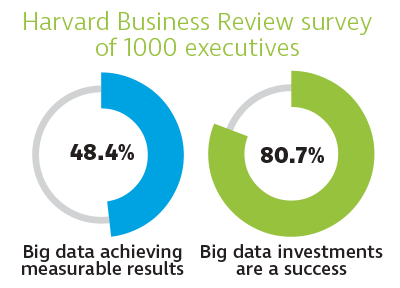
What Types of IoT Devices are Available?
There are five main types of IoT devices available to the transportation sector:
- Managed install
- Self-install
- Battery powered sensors
- Phone based apps
- Cameras
Managed install devices
These are hardwired, tamper-resistant devices often chosen when gathering data is required for critical business workflow and compliance purposes. They have great connectivity to peripheral sensors and provide fleet owners with a broader picture of operational performance. Device below is the VT101.
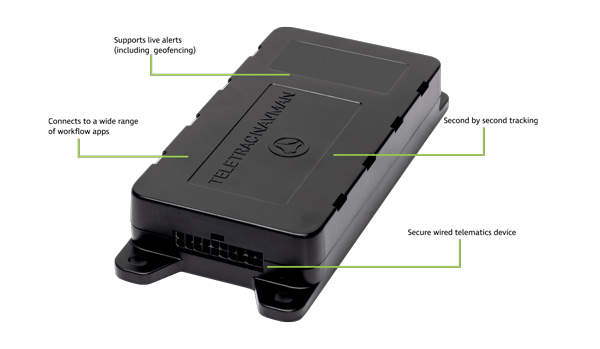
Self-install devices
These plugin devices can easily be moved and installed across a fleet and are often used when vehicle turnover is high or when the data being captured is not for compliance purposes. Device below is the SI201.
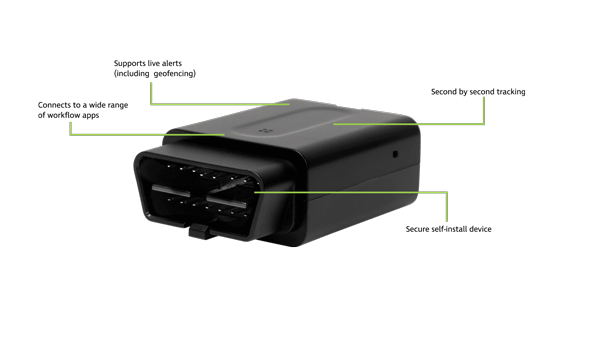
Battery powered sensors
These smaller devices are used when an asset doesn’t have a power source, and report data less frequently, or when a trigger occurs, such as movement or crossing a boundary. They are often ruggedized and IP67 rated. The device below is the AT301.
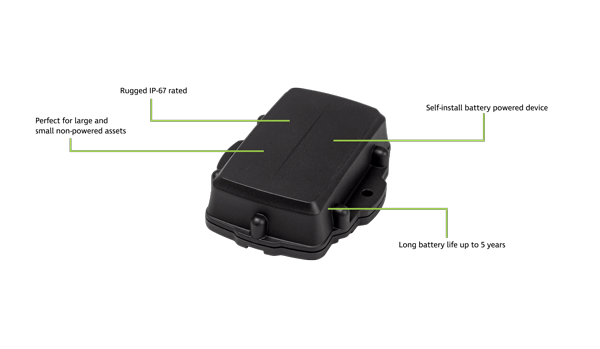
Phone-based apps
The latest IoT networks are complimented with a suite of apps that enable remote workers to input data that is instantly made available in fleet management software. This includes the recording of hours of service, pre-trip inspections, job management (including proof of delivery) and document management.
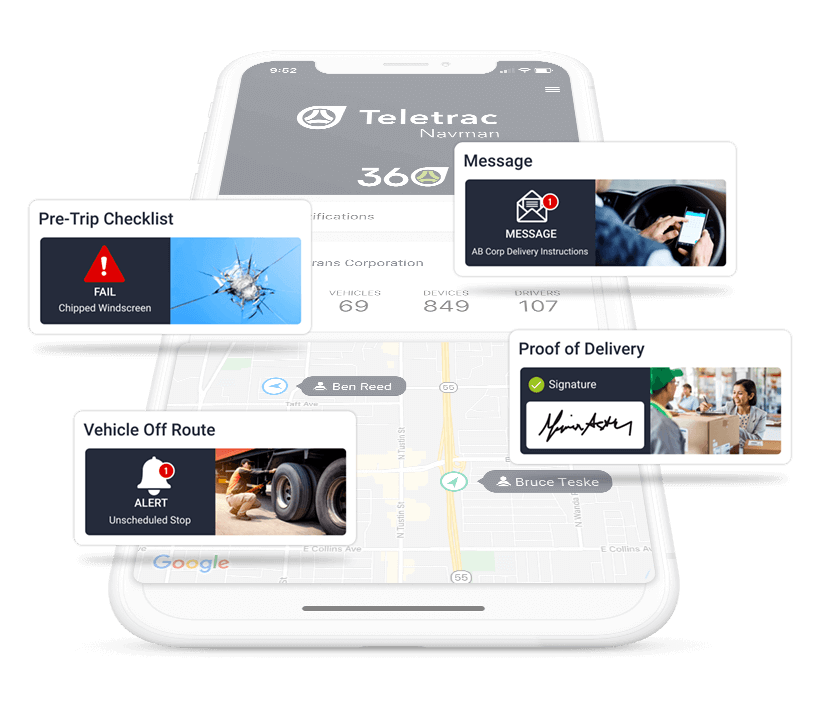
Cameras
Advancement of camera technology has turned the dash cam into an IoT device. With embedded computer vision the latest AI enabled cameras are automatically turning video into insight that is enhancing preventative safety programs. By automatically identifying distracted, fatigued and dangerous driving these devices offer unprecedented visibility into driver behavior, both positive and negative. Device below is the forward and driver facing smart dashcam.
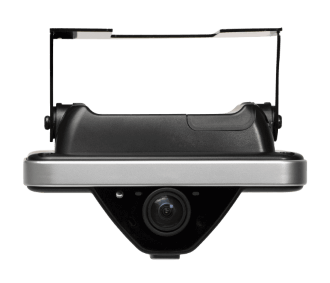
Successful Use of IoT in the Transportation & Logistics?
IoT technology can help businesses in transportation and logistics tackle their biggest challenges around visibility, agility and sustainability. Many have already implemented technology to capture data, but utilizing this data to make decisions and drive change remains a challenge. A recent report by McKinsey & Company highlighted that many telematics programs are let down by disconnects within the company implementing the solution, and called out a need for data interpretation as a key part of a successful implementation.
It is clear that capturing data is only part of story, so what should you be looking at when reviewing your IoT technologies?
Fleet Management Software
Fleet management software has the task of gathering, storing, processing and presenting data captured from sources such as vehicles, cameras, sensors, and mobile apps. This is the portal through which data is transformed into actionable information, and it is important that you can easily access the information you need to run your fleet.
Thorough software evaluation is the most important step when researching solutions, and it is critical that the software can answer your questions quickly and easily. Features including dashboards, natural language search and exception alerts are all valuable functions, but software with embedded artificial intelligence are taking things further, by automatically interpreting data and flagging abnormal patterns.
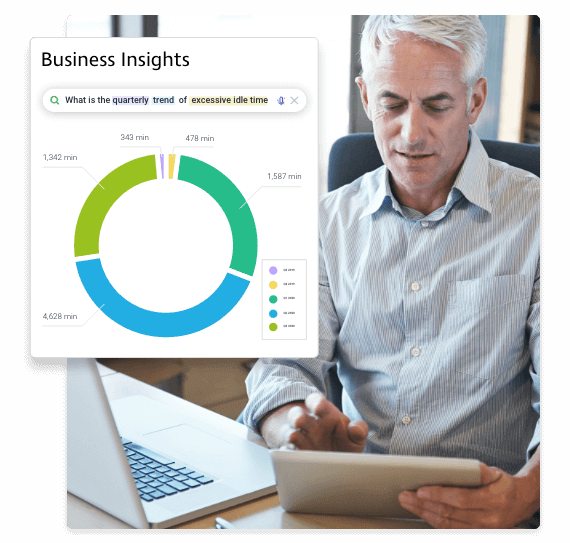
Driver mobile applications
Digital transformation is one of the most effective ways to drive change across your operation. In the transport and logistics industry, there are a number of mobile applications that can be used to share information and create workflows that simplify driver activities. These applications ensure that correct processes are followed and that data collected is instantly accessible in the connected fleet management software. Examples include:
- Job management applications that create daily job sheets for drivers and manage route optimization through to proof of delivery.
- Digital forms and checklists that replace paper processes, including incident forms, proof of delivery or vehicle inspections.
- Scorecard applications that show drivers, in real time, how they are performing against company benchmarks.
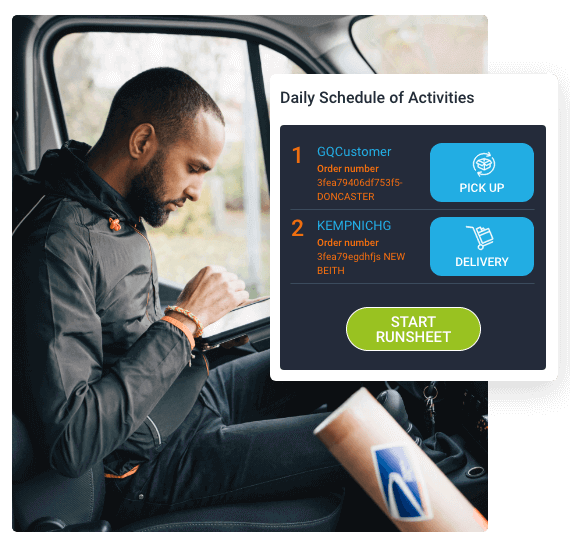
Integrations
Most fleet management software is powerful on its own, but by integrating your fleet IoT data with other platforms can go a long way to turn IoT data into decisions. Pre-built and custom connections can seamlessly integrate a fleet management platform with other software through an open API, allowing for the sharing of information between other systems, including maintenance, billing, payroll, inventory, fuel tax reporting, and much more.
The ability to share IoT data across platforms allows transport and logistics companies to create connected insights that can bring operations teams together and create change that lasts.
Unlock the Power of IoT for Your Fleet
Discover how Teletrac Navman's telematics solutions can help you leverage the power of IoT to optimize your fleet operations.
How are Transportation Companies Benefiting from IoT?
IoT is an essential part of modern-day fleet operations and when harnessed effectively provides the following benefits:
Operational efficiency
IoT in transportation empowers fleet companies to monitor activity in real-time. The company can respond to real-time issues and make immediate decisions to facilitate on time delivery. IoT also enables digital and automated processes to be implemented that alleviate the need for paperwork for both drivers and managers, allowing them to focus on more essential activities.
Safety
Improving safety is a key benefit of IoT technology in the transport industry. This includes ensuring vehicles are properly maintained and by taking proactive steps to improve driver behavior. Camera technology is at the forefront of proactive safety programs, with the latest AI cameras capturing data and providing audible driver alerts for activities that include speeding, mobile phone use, tailgating, and seatbelt violations.
Compliance
IoT takes the pain out of compliance activities through automated reporting, vehicle tracking, and driver fatigue monitoring. Fleet management systems use IoT to ensure regulatory compliance with hours of service regulations in the form of ELD, helping to ensure greater accuracy in reporting Hours of Service (HOS). The technologies can also help to streamline other compliance activities including IFTA reporting and DVIR.
Cost reduction
Telematics solutions provide operators with a wealth of performance insights that enable them to reduce fuel spend through improved driver behavior and more efficient routing, extend vehicle lifespans with effective maintenance scheduling and cut costs associated with administrative activities.
Resource optimization
IoT in transportation creates transparency among fleet operators and drivers. Based on the data gathered, fleet managers can accurately monitor driver activity and on duty time, enabling them to assign work without risk of violations or delays. IoT eliminates ambiguity between fleet operators and drivers, leading better working relationships and operational efficiency.
Route management
With embedded GPS IoT devices fleet managers can monitor their vehicles in real-time and guide drivers to reach their destinations in the shortest time. Fleet managers can also assign new pick-up locations to drivers and offer real-time notifications to drivers on changes to daily run sheets.
How Can Transportation Companies Set up for IoT success?
Step 1: Set goals
Set up goals and objectives that you would want your organization to achieve through IoT technology. These goals should be communicated to all the stakeholders in the company. Typical goals could include
- Lowering fuel consumption and costs
- Improving vehicle and asset utilization
- Safety improvements for drivers
It is essential to agree with all the participants on how performance will be measured, what the goals are and why the business is focusing on these areas. Below are the top 5 KPI's that we see our customers measure.

Step 2: Share information with stakeholders
Recording all the relevant information and sharing it with the people involved will help to gain buy in and support. Information plays an important role in analyzing past performance and setting future goals and it is important that your team believe in objectives that have been set. The ability to share information in real-time through automated reports and customizable dashboards can significantly help in this area.
Step 3: Plan for action
Ensure the right information is reviewed in a timely manner and action planning processes are developed. Having a plan to act on the data is almost as important as capturing it in the first place.
Step 4: Choose the right IoT technology for your business
There are many factors to consider when choosing which IoT technology to use and with which provider to partner with. Companies should consider:
- Scalability
- Security
- Usability
- Driver applications
- Cost
Your IoT Solution
The use of IoT in the transport and logistics industry has completely revolutionized the sector by making data available in real-time. When used effectively to drive decisions, businesses are seeing productivity increase, improvements in resource management, cost reductions and safety improvements.
What is clear, is that the execution in using the technology is as important as the implementation, and this is why at Teletrac Navman we have a listen-first approach, so we can build the right IoT solution and provide the on-going support to help your business reach its goals. Please contact us at 1-(888)-799-4925 or using this form if you’re interested in finding out more about Teletrac Navman and to discuss your solution.

